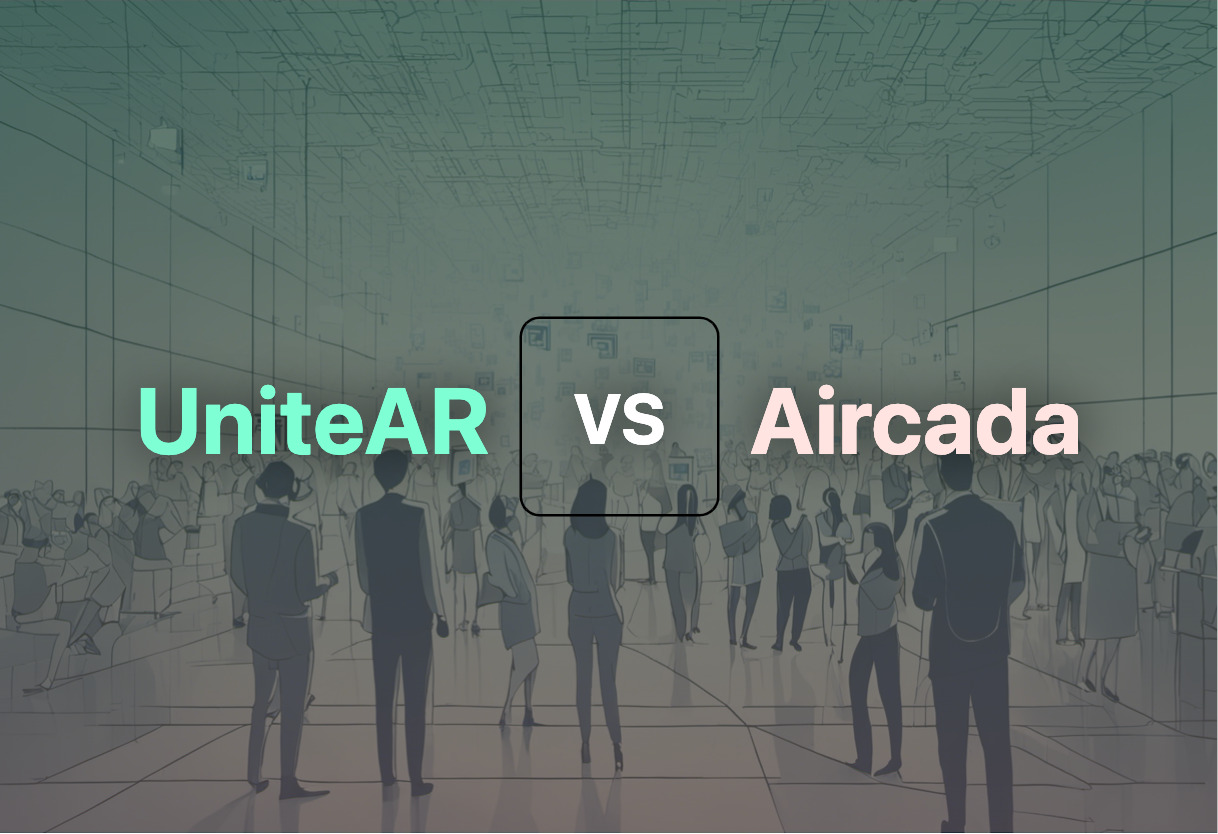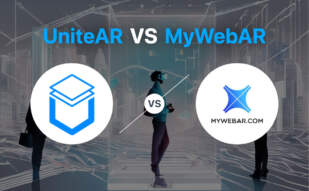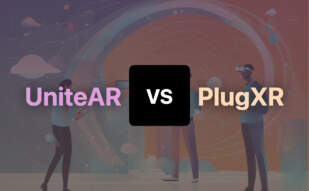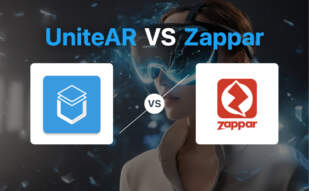For the novice and privacy-onus AR content creators, UniteAR stands out offering no-code AR experiences, free usage, and non-tracking of user data. Professionals and businesses demanding detailed AR modeling and higher integration with devices favor Aircada for its AI-driven AR creation and WebGPU support.

Key Differences Between UniteAR and Aircada
- No-Code Platform: Both offer no-code AR experiences, but Aircada additionally provides AI-driven AR creation.
- Applications: UniteAR focuses on education, marketing and advertising, whereas Aircada caters primarily to businesses and OEMs.
- Pricing: Both platforms offer competitive free versions. UniteAR holds additional plans while Aircada pricing starts at around $20/month.
- User Data Tracking: UniteAR does not track user data. Aircada’s stance on this is not made explicit.
- Device Support: Aircada uses WebGPU for fast performance and supports various AR and VR devices. UniteAR is optimized for the iOS platform.
| Comparison | UniteAR | Aircada |
|---|---|---|
| AR Capability | Power of Augmented Reality | Specializes in Augmented Reality (AR) |
| Target Audience | Educators, Creators, Businesses, Enterprises | Marketers, Artists, 3D Designers, OEMs, Industrial Equipment |
| Platform Compatibility | iOS 11.1 or later, MacOS 11.0 or later | Device agnostic: Mobiles, Tablets, Lidar-equipped gadgets |
| Pricing Structure | Free version available, In-app purchases | Free version with custom branding, pricing tiers starting at $20 a month |
| Experience Sharing | Record and Share AR experience | Team Collaboration |
| Coding Knowledge Requirement | No coding required | No-code platform |
| Key Features | 3D models, 360-degree content, videos, animated gifs, image slideshows | 3D model scanning & uploading, Automatic graphic creation, Spatial AI |
| Language Support | English, Arabic, French, Portuguese, Spanish | Multiple Language Support |
| Web Contact | www.ibosoninnov.com | aircada.com |
| Documentation Available | Yes | Yes |
What Is UniteAR and Who’s It For?
UniteAR is a free app that leverages the power of augmented reality to deliver immersive and engaging experiences. Developed by iBoson Innovations, the platform allows educators, creators, businesses, and enterprises to create custom AR experiences with no coding required. Boasting over 100 3D models and the possibility to easily share AR experiences, UniteAR is a tool designed for people seeking to simplify the AR creative process.

Pros of UniteAR
- Over 100 3D models for immersive experiences
- Allows creating custom AR experiences with no coding
- Does not track user data
- SaaS platform for white-labeled AR Apps
Cons of UniteAR
- Platform compatibility limited to iOS 11.1 or later, MacOS 11.0 or later
- Possible issues with transparent GIF files
- In-app purchases may be necessary for additional services
What Is Aircada and Who’s It For?
Effortlessly referred to as the “Canva” of AR Content Creation, Aircada is a no-code platform designed for AR content creation, deployment, and viewing. Established in 2020 by brothers Sean and Wylie Chenoweth, this platform caters to businesses of all sizes, AR enthusiasts, marketers, artists, and 3D designers. It stands out for its swift AR creation facilitated by AI-driven algorithms and compatibility with diverse devices, including mobiles, tablets, and Lidar-equipped gadgets.

Pros of Aircada
- AI-driven algorithms for swift AR creation
- Device-agnostic platform
- Secure, encrypted communication
- Automatic graphic creation for a smooth user experience
Cons of Aircada
- Relatively new in the market, established in 2020
- Depending on the user needs, higher pricing plans might be required
- Requires WebGPU for fast performance, which might not be available on all devices
UniteAR or Aircada: Your AR Solution Choice?
In the ever-evolving world of AR/VR, the two power-houses UniteAR and Aircada are put side by side. Let’s dive into which is optimal for you!
Educational Entities and Creators
For those in education or creative industries, UniteAR is your optimal choice. The no-code solution, alongside an array of multilingual support and in-built over 100 3D models, aids in creating immersive and engaging AR experiences. Also, for those privacy-minded, UniteAR offers a sturdy commitment to not track user data.

Business Owners and Marketers
Business professionals seeking an effective AR/VR tool would find Aircada exceedingly useful, mainly due to the strong emphasis on AI-driven algorithms and swift AR creation. Its focus on encrypted communication — a priority for enterprise-grade projects — further makes it a promising choice. The seamless integration and team collaboration features make it apt for businesses and marketers.

AR Enthusiasts and 3D Designers
For 3D designers and AR enthusiasts who are interested in rapid AR creation and high-quality 3D renderings, Aircada is the platform for you. With its extensive 3d model scanning from mobile and automatic graphic creation, Aircada is rightfully labeled the “Canva” of AR content creation.

In a heartbeat, it is clear – if you are a proponent of education or a creator, your AR partner is UniteAR. For swift enterprise AR deployment and 3D designs, ride the wave with Aircada.
Patrick Daugherty
Content writer @ Aircada. Merging AR expertise with a love for late-night gaming sessions.





